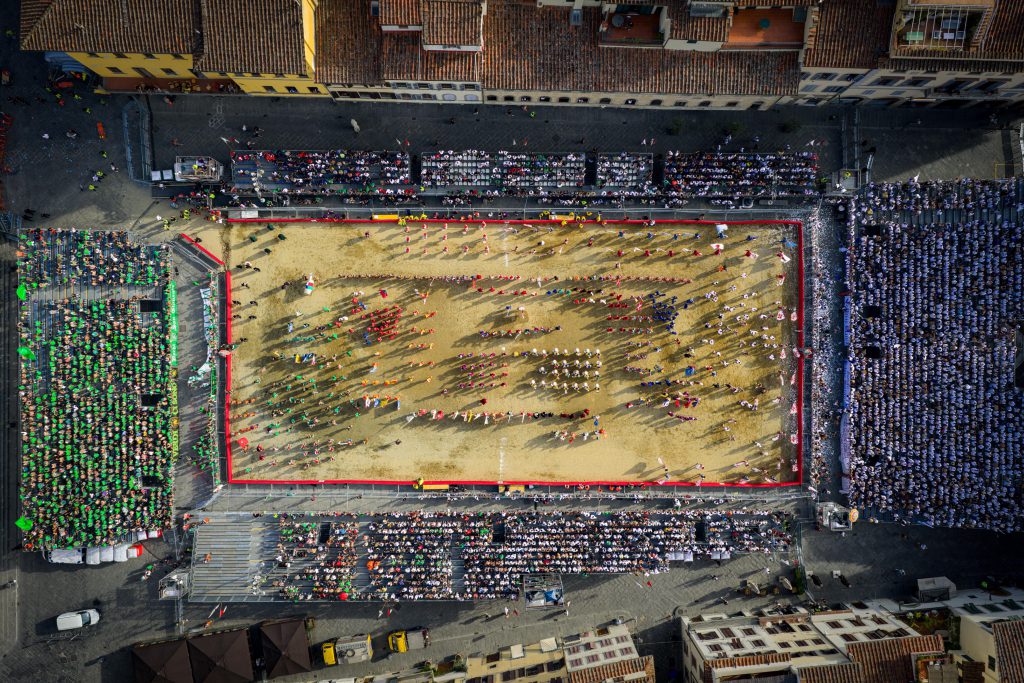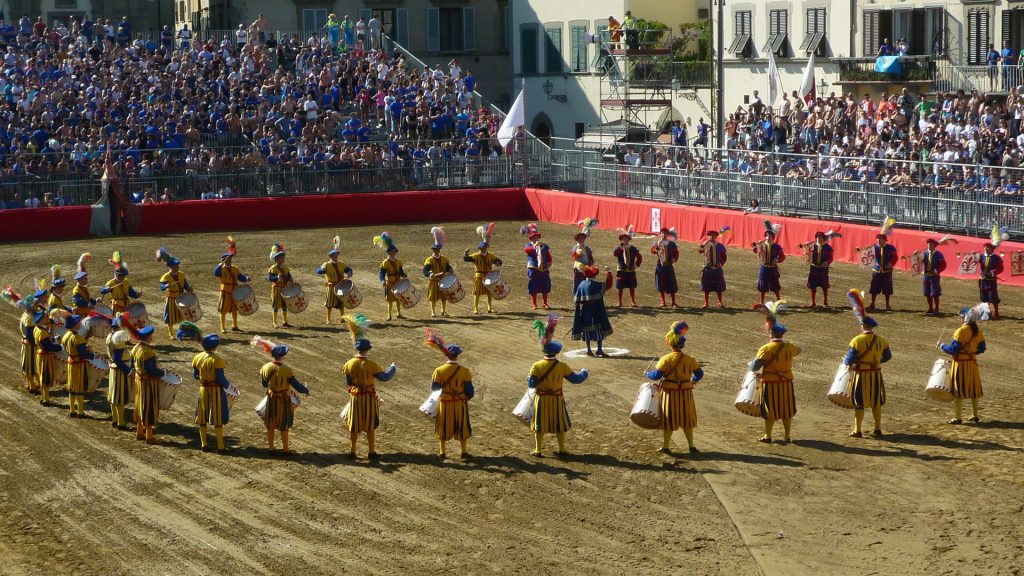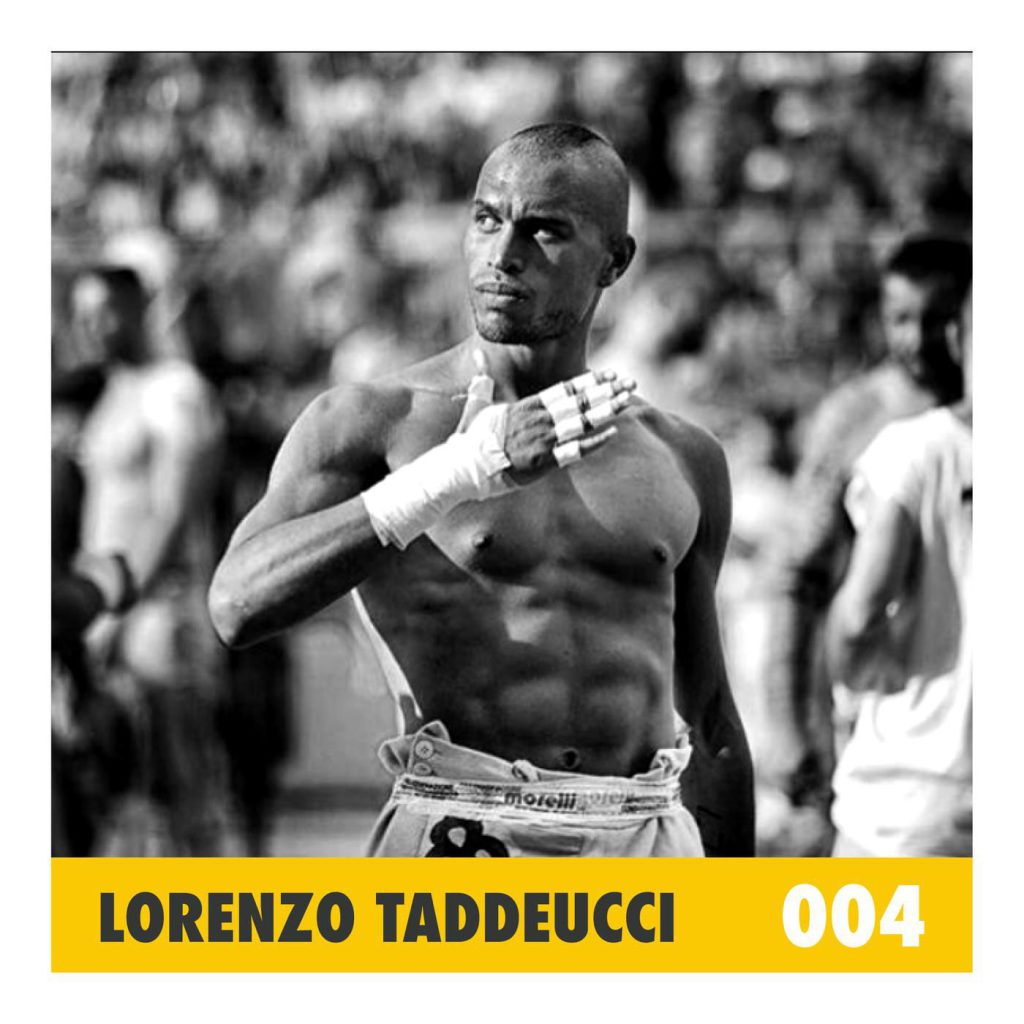The city of Florence has always been recognized as the “Cradle of the Renaissance” to emphasize the moment of splendor that the city experienced from 1400 to 1600, bringing with it an education on an artistic and cultural level without equal.
In those years, during carnival festivities, or other holidays, young Florentines would gather in challenge in the squares.
It is only from February 17, 1530 when, during the siege of Florence by the troops of Charles V, in a packed Piazza Santa Croce the crowd played “in mockery of the enemy.”

It was that very occasion that laid the foundation for the traditional and compelling Florentine Historical Football (Calcio Storico Fiorentino).
A historical re-enactment that, along with the procession, celebrated the day of St. John the Baptist the patron saint of the city of Florence.
Calcio Storico, foundation and traditions
Calcio Storico Fiorentino, , also known as livery soccer or costume soccer, is an ancient team game whose origins date back to the Roman Harpastum, a physical game more like rugby than modern soccer, with deep roots in martial arts. Through the centuries, Florence has transformed this tradition into a spectacular and identity-building event.
The roots of the sport go back to antiquity, when the Greeks practiced Sferomachia and the Romans Harpastum, a popular pastime among legionnaires. In the Middle Ages and Renaissance, Florence became the center of an evolved version of the game, widespread among nobles and young citizens. Distinguished players, often members of the aristocracy, wore lavish liveries, contributing to the distinctive name of the competition.
One of the most famous episodes is the match of February 17, 1530, played in Piazza Santa Croce during the imperial siege. Despite the ongoing war, the Florentines played with pride, turning the event into a symbol of resistance.
After centuries of popularity, Calcio Storico experienced a decline in the 18th century, with the last official match in 1739. However, in 1930, the tradition was reborn thanks to an initiative to celebrate the four hundredth anniversary of the Siege of Florence. Since then, the tournament has involved the city’s four historic districts each year: Whites of Santo Spirito, Reds of Santa Maria Novella, Blues of Santa Croce, and Greens of San Giovanni.
Teams not only represent a neighborhood, but embody values and identities deeply rooted in Florentine history. Calcio Storico is a combination of soccer, rugby and wrestling, with traditional rules updated to ensure safety and showmanship. Each team consists of 27 soccer players, selected from the best athletes in the neighborhoods, who train hard for the tournament.
The main event takes place each June, with two semifinals and a final in Piazza Santa Croce during the celebrations for St. John the Baptist, Florence’s patron saint. The tradition has crossed city boundaries with special matches in Rome in 1960, in New York for Columbus Day in 1976, and in Lyon during the 1998 World Cup.
Calcio Storico Fiorentino is more than a competition: it is a cultural legacy that combines history, passion and belonging. Florence continues to celebrate it with pride, keeping alive a thousand-year-old tradition that fascinates citizens and visitors alike.
Historical Florentine soccer in the world
Starting this year, Tekmerion, a company for which Niccolò Celesti is a local producer, arrives in Florence: it has purchased the worldwide television rights and merchandising of historic soccer for the next few years of production.
The partners, executive producers in America, kicked off a new production of historic soccer. It has been televised live in the United States and has been made available on Zeam and Dazn platforms in both English and Italian: dual-language commentary has been introduced this year.
It is therefore a moment of change and modernization of historic soccer.

Statements from the president of Florentine Historical Football
For the occasion we interviewed the President, Michele Pierguidi, who gave us his statements immediately after the semifinals occurred last June 14 and 15 in anticipation of the final:
“It’s been some pretty full weeks, initially I was concerned about taking the best care of the first two semifinals, which as you know were two very important games.
On Saturday the two teams that have contended in recent years competed in the finals, while on Sunday it was the turn of the White versus Green team.”
President, what are your feelings about holding this very important office?
“It’s been 15 years that I’ve served as president of Historic Football, and every year is a different experience, with new emotions all the time.
In the early years there was a bit of inexperience, a touch of recklessness and a lot of enthusiasm.
Today there is definitely more experience, but the pride of representing the city’s most important historical reenactment remains unchanged.
Of my city. Of one of the most beautiful cities in the world.
Every time I have the honor of standing behind the Gonfalone of Florence, with the Red Lily in the White Field, it is an incredible thrill.
As a Florentine, every time it takes my breath away.
The difficulties of my role are many: getting the four colors to agree, getting them back on the field, trying to make everything as smooth as possible, enforcing the rules…
It is always very complicated, but at the same time it is something fascinating and beautiful.
I have been doing this for 15 years, and I am deeply proud of it.”

The Teams
Four teams represented by the four symbolic colors of the city of Florence compete in the tournament.
Do you want to know why?
The reason why the 27 players per team are associated with four different colors is because they represent the city’s historic districts.
Originally there were only two colors and corresponding districts, the Whites and the Greens. Today the city is divided into four districts:
Santa Maria Novella Characterized by the color Red, it is located in the northwest quadrant of the city, encompassing the Arno, Ponte Vecchio, Porta al Prato to the middle of the Fortezza da Basso. It is named after the church of Santa Maria Novella.
Holy Cross Here the color is Azure, and the quadrant is the southeastern part of the city, encompassing from Porta a Pinti to the Arno on the Zecca side and to the west the Streets of Calimara and Por S. Maria to the Ponte Vecchio. The name, as you might guess, comes from the church of Santa Croce.
San Giovanni Characterized by the color Green, it is located in the northeastern quadrant of the city, encompassing the western side of Borgo Pinti, the northern part of Borgo degli Albizi, the Corso, the eastern part of the Mercato Vecchio, up to North Gate S. Gallo. It takes its name from the Baptistery of St. John.
Holy Spirit The color of the neighborhood is White and it is located in Oltrarno, the southwest quadrant of the city. The name, again, comes from a church, in this case the Basilica of Santo Spirito.

The tournament in the 2025 edition
On Saturday, June 14 and Sunday, June 15, the semifinals of the Florentine Historical Football were held. An event that in recent years attracts more and more spectators, from Italy and beyond.
The semifinal between the Reds of Santa Maria Novella against the Blues of Santa Croce was held on June 14.
Dominating from the opening moments were the Reds, leaving little room for their opponents: the match ended 16.5 to 6.
The next day, June 15, was the second semifinal between the Whites of Holy Spirit and the Greens of St. John’s. It was a very evenly balanced match, edged out by the Greens 13-10, against Whites who struggled to the last moment.
The finalists will clash on June 24, on St. John’s Day.
The former face of Historic Florentine Football
We could not help but close our article with a person who experienced the field of Historical Football as a protagonist.
In fact, our magazine was briefly told about Lorenzo Taddeucci, a former soccer player for the Holy Spirit Whites, and from his words we can see all the feelings that a soccer player experiences before entering the field:
“To have been a Calcio Storico Fiorentino soccer player, for my neighborhood Santo Spirito, was a wonderful feeling.
Really an honor for me.
Of course you have to think that it’s not easy at all going into the field, you live on pure adrenaline in those moments.”
Were you afraid when you entered the field?
“No, fear no, however, you were aware that you knew how you got in but not how you got out. For me, thank God, it always went well.”
We just have to get on the field and follow the final of the Florentine Historical Football!

Discover also the Giostra della Quintana di Foligno
Cover photo Federico Hurt

